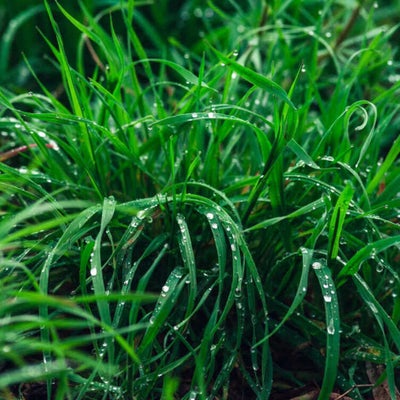
Quick facts
The botanical name for couch grass is Elymus repens; it is also commonly known as twitch grass and common couch
It is a UK native, found on roadside verges, waste ground and farmland
Its leaves provide food for the caterpillars of several moths and butterflies
In gardens, couch grass grows in lawns and borders
Couch grass spreads by fast-growing rhizomes and by seed
If you need to remove couch grass, non-chemical control methods can be effective
What does couch grass look like?
Couch grass is a fast-growing that can reach up to 1m (3½ft) tall. Its stems hold flattened green leaves up to 40cm long, the lower ones partially covered with a pale sheath. Upright, unbranched flower spikes appear in late summer; these feel smooth to the touch as flower are held flat to the stem. The tiny flowers are yellowish-green. Golden seeds follow in early autumn.
Underground, couch grass produces thin, fibrous feeding roots and a dense network of pale (underground stems). The rhizomes tend to grow in straight lines away from the parent plant.
Although most gardeners are familiar with couch grass, there are other common garden grasses that it can be confused with. See our page on coarse grasses in lawns for more advice on identifying them.

Did you know?
Maintaining an immaculate, fine lawn is labour intensive, reduces biodiversity in a garden, and often involves applications of fertilisers and pesticides that are harmful to the environment. Perceptions of lawns are changing, and gardeners are embracing the benefits of species-rich lawns, reflected by the popularity of initiatives such as No Mow May and Let it Bloom June.
Is couch grass a weed?
Couch grass has long been considered a weed by gardeners as, unlike other coarse grasses, it often grows among and through border plants as well as in lawns and on allotments. Those wishing to maintain immaculate, uniform lawns and tidy borders are likely to want to remove couch grass before it becomes established and spreads.
However, couch grass is an important source of food for butterfly and moth caterpillars, including those of speckled wood and ringlet butterflies. Its swaying flower and seed heads also look attractive when grown in a meadow or species-rich lawn. As gardeners embrace “ecological gardening” and welcome a wider range of species into their gardens, couch grass is increasingly seen as a wildflower.
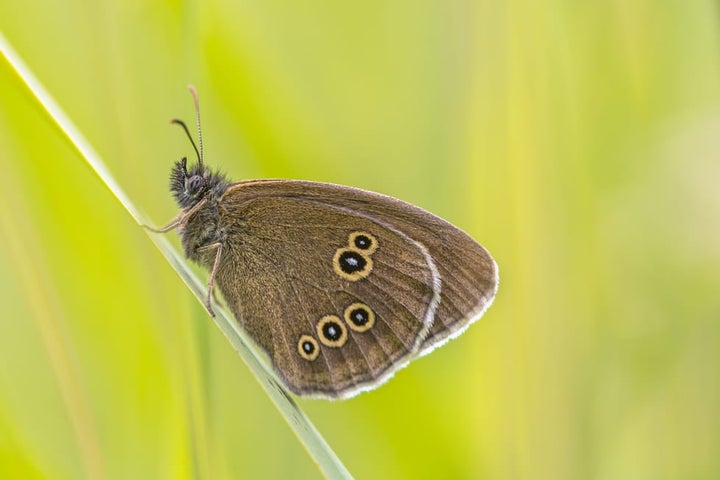
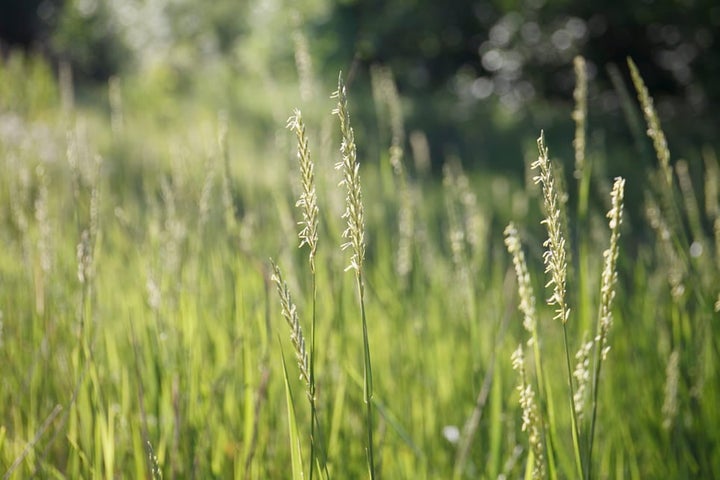
What is a weed?
The term ‘weed’ describes a plant that is growing where it isn’t wanted. Weeds usually thrive in average garden conditions, reproducing and spreading easily. It is up to you to decide what you call a weed and what you choose to retain or remove.
Frequently asked questions about controlling couch grass
Here are our answers to your most common questions about dealing with couch grass:
How invasive is couch grass?
Couch grass didn’t earn its reputation as a weed for nothing – it spreads quickly once established. Plants come into growth and begin sending out new in early spring, allowing it a head start on many other garden plants. These rhizomes root and send up a tuft of new growth as soon as they find a suitable patch of bare ground. also produce seed in early autumn, and these can remain viable in the soil for years until conditions favour .
The good news is that couch grass isn’t deep rooting and or new plants are easily removed if spotted early. Plants also produce a relatively low number of seeds, approximately 30 per flower stem, and only around half of these are usually viable. Finally, as regular mowing tends to suppress its growth in lawns, couch grass can grow happily alongside other lawn grasses without taking over.
Top Tip
As small sections of rhizome can regenerate into new plants, couch grass is often inadvertently introduced to gardens in the rootballs of shared plants, and moved around gardens in soil and compost. You can help to limit its spread by omitting rhizomes (and seedheads) from your home compost bin, examining (and quarantining) new plants to check for any hidden couch grass and avoiding digging and moving soil from areas where it grows.
Do I need to get rid of couch grass?
Not necessarily – allowing couch grass to grow in a meadow, species-rich lawn, on a steep bank or in a wildlife patch or uncultivated area is a great way to support wildlife and boost the of your garden.
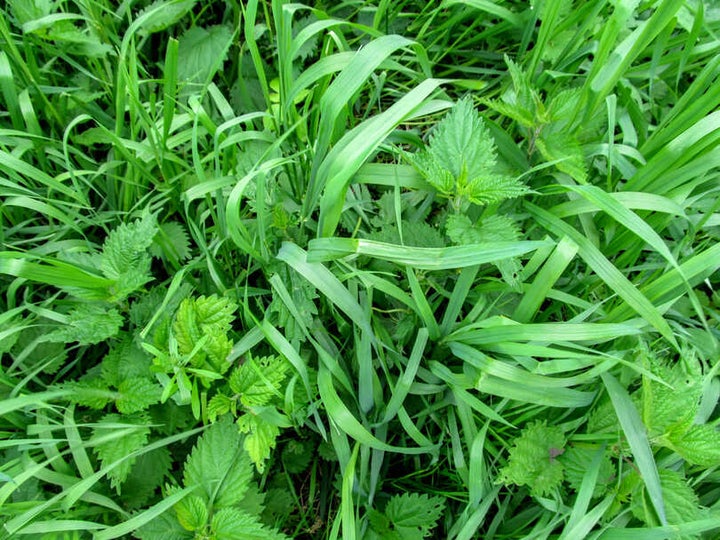
As it presents little competition to large, established plants, couch grass can be left to grow in shrub borders and at the base of established hedges, and, as it looks green and can be walked on, played on and mown along with traditional lawn species, there is no need to remove it from your lawn either.
However, as couch grass is capable of outcompeting, entangling and smothering smaller or less vigorous plants, it is a good idea to remove it from veg beds, alpine rockeries, newly-planted borders and newly-sown lawns. It is also worth managing the spread of any clumps you would like to keep, to stop them getting out of bounds.
What is the easiest way to kill couch grass?
If you have couch grass growing where it is not wanted, there are a few ways to remove it:
In borders
- Avoid disturbing the soil – couch grass can regenerate from rhizome fragments, so avoid chopping them up by or digging over the soil where it grows.
- Fork out individual plants – use a hand fork to tease couch grass and its roots and rhizomes from the soil. It’s often easiest to grasp a shoot and fork round it, gently lifting to reveal the roots that need to be dug out. This is best done in early spring before new couch grass plants become established and before established ones send out new rhizomes. Check for regrowth regularly throughout the growing season.
- Lift border plants, clear the ground and replant – an option where couch grass is abundant in established borders and you don’t wish to leave the area bare (as below). Use a border fork to lift out and set aside border plants and then remove as much couch grass as possible. Take the time to work right through the area, teasing out as many rhizomes as you can find. Before replanting, examine the rootballs of your plants carefully to remove any hidden couch grass rhizomes. This is best done in early spring, when new couch growth is easy to spot and border plants are only just starting into growth. Fork out regrowth (as above) throughout the as soon as it appears.
- Cover the soil to smother growth – a good option where couch grass is abundant in as yet uncultivated areas. Cut down couch grass stems, cover the ground with a layer of compostable material, such as cardboard, and cover that with a layer about 20cm (8in) thick of organic matter, such as or wood chips. Alternatively, use a heavy grade matting. This will block out light and prevent growth, causing the root system to die. Leave in place for at least a few years, topping up the organic matter layer as necessary.
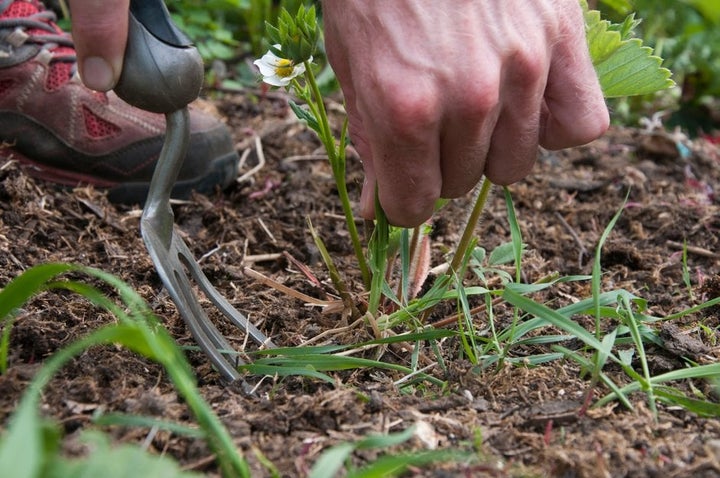
In lawns
- Improve the health of your lawn – couch grass is less able to spread into and establish in dense, healthy lawns. Follow a programme of lawn maintenance in spring/summer and autumn to boost the vigour of your lawn. If patches of your lawn are struggling, overseed with a mix to suit the growing conditions.
- Mow regularly – this will prevent couch grass from flowering and setting seed, helping to curtail its spread.
- Fork out individual plants and repair bare patches – use a hand fork to lift couch grass plants and their rhizomes from the lawn. September is a good month to carry this out, as you can re-seed bare patches straight away. This is a good, easy option for quick results on small areas of lawn. Where couch is widespread within a lawn and cannot be tolerated, it may be necessary to strip off the turf, dig out the couch grass and re-lay or reseed the lawn.
Top Tip
Don’t add rhizomes, roots or seed from couch grass to your home compost bin, as it may not reach high enough temperatures to kill them. Instead, put them in your council green waste recycling bin or take them to your local recycling site.
Should I use weedkiller?
No – although time consuming, couch grass can be controlled naturally, so there is no need to use a weedkiller. As couch grass is a grass species, there are no selective lawn weedkillers available that will kill it without also harming your lawn grass.
For more information see our page on Weeds: non-chemical controls.











